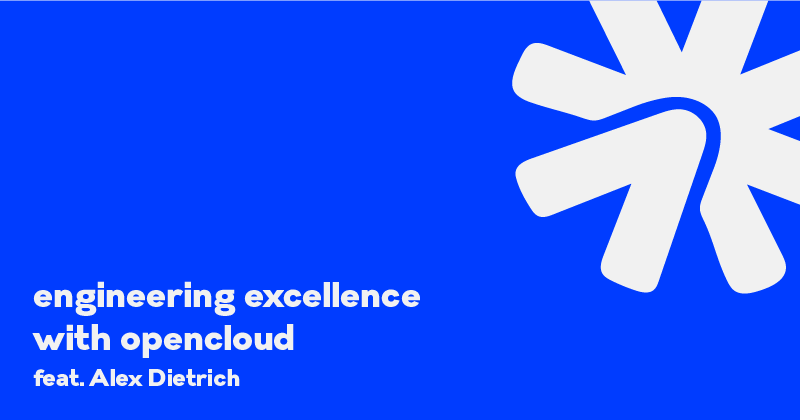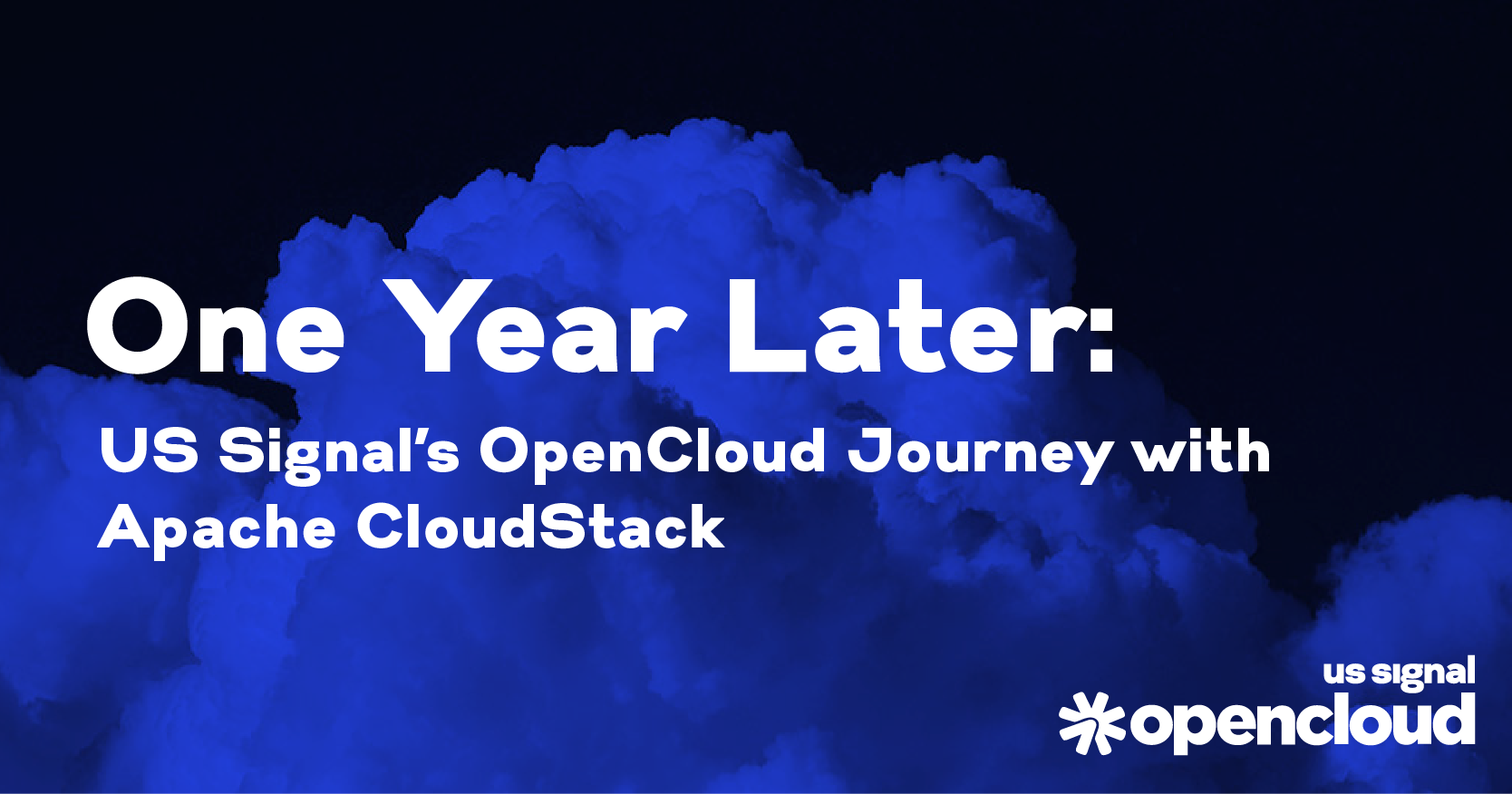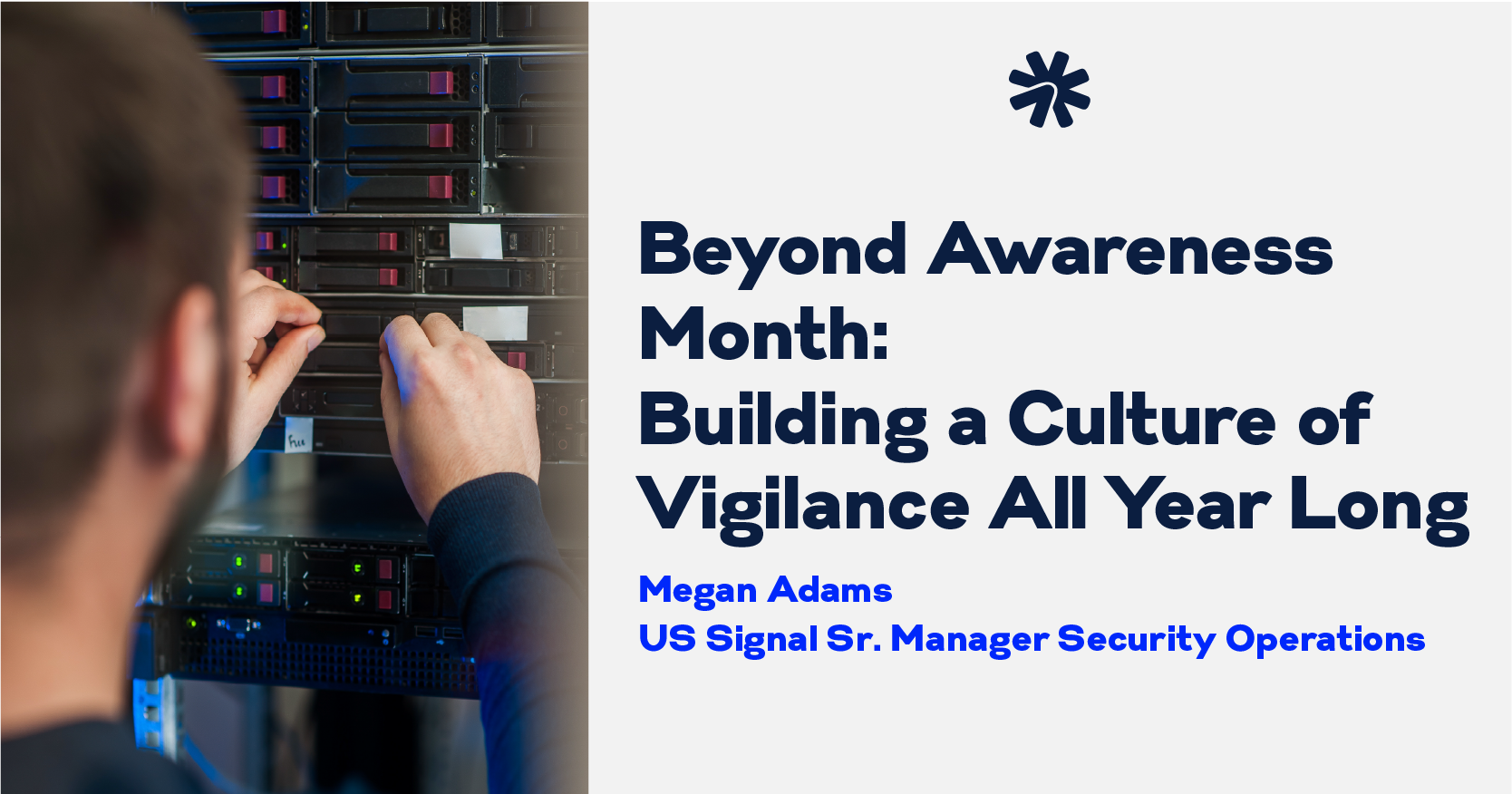Engineering Excellence with OpenCloud feat. Alex Dietrich

OpenCloud, powered by Apache CloudStack, brings about a monumental shift in US Signal’s Infrastructure-as-a-Service offering with increased self-service capability, inherent multi-tenancy, and flexibility to meet the diverse needs of US Signal’s customers. Not to mention, this also provides freedom from complex licensing schemes that put us and our customers at the mercy of software vendors. While these aspects are key to the customer experience, our goal was to develop an OpenCloud architecture that provides confidence in the performance and reliability that our customers have come to expect from our cloud services.
That’s so Metal
The foundation of OpenCloud is the bare metal that provides the processing power for virtualized workloads. For our initial deployment, we’ve selected Dell PowerEdge 1RU rack servers, which provide a common form factor with flexible CPU, RAM, and disk configurations. This allows us to scale out the physical hardware consistently while differentiating hardware components as necessary to meet specific workload demands.
One major constraint we sought to significantly reduce was the oversubscription of network and storage connectivity brought about by blade server architecture. To address this, each server has a dedicated 2x100Gbps network interface card (NIC). To accommodate the throughput requirements, an Arista Networks leaf-spine fabric provides the necessary 100Gbps port density with multiple 400Gbps links between switches to provide breathing room for converged network and storage traffic.
Storage… in a Flash!
Flash is here as the new primary storage offering. This new standard in storage for OpenCloud provides a marked improvement over combined spinning/flash arrays. The new storage array, provided by Infinidat, has been built to focus on delivering IP-based storage eliminating the overhead consumed by Fibre Channel components. This gives us optimal performance for the storage offering presented to OpenCloud, while maintaining a high level of reliability provided by the Infinidat storage architecture.
Open, Not Closed
Delving into the world of open source is not for the weary but provides unrivaled flexibility in solution delivery. This extends to all aspects of the OpenCloud infrastructure. Most notably, CloudStack provides a hypervisor-agnostic approach to managing cloud infrastructure, allowing us to create new cloud product offerings tailored to our customers’ specific virtualization or bare metal requirements. Even on our monitoring infrastructure, community-sourced monitoring toolsets allow us to measure performance to all aspects of a given virtual machine and correlate data to both the physical hosts and network infrastructure. As you can imagine, achieving the same monitoring with a closed-source solution would quickly become a burden with additional licensing and interoperability considerations.
The learning process of a close-source solution often involves delving into vendor reference architectures, proprietary implementation tools, and product manuals. To achieve the same with open source, the learning model shifts to mailing lists, GitHub issue searches, and informative blog posts. While some aspects of open-source documentation may leave something to be desired, there is access to the project creators, source code, and in some cases more established support offerings. such as our partnership with ShapeBlue. Having the accessibility of enterprise-level support from ShapeBlue for CloudStack gives us the confidence knowing there is a deep well of engineering knowledge of active contributors to the CloudStack project to pull from when the most complex issues arise.
One UI, Many Locations
OpenCloud provides the ability to access and provision services across multiple availability zones without unnecessarily complex infrastructure. All customer instances are visible from one place regardless of location those instances are deployed in. As we deploy multiple CloudStack clusters across multiple geographics, the redundancy and resiliency of reaching the CloudStack interface is paramount. Multiple management servers load balanced at a global level allow us serve OpenCloud to closest point of access to the customer. Within each OpenCloud location, local load balancing provides the ability to reduce the impact of any potential failures.
Pragmatically Programmatic
A key criteria in the design of the OpenCloud architecture was finding applications and hardware components that presented easy-to-use APIs and pre-built tools for assisting in automation development. While some other virtualization platforms provide multiple APIs with disparate features in each, every one of our infrastructure components provides a single AP with several pre-written vendor and community-sourced automation toolsets. This enables our engineers to quickly build consistent and repeatable processes for maintaining and scaling OpenCloud infrastructure.
Conclusion
While many IT organizations face a difficult challenge of how to cope with changes in licensing and delivery models for their virtualized infrastructure, US Signal has focused on addressing the technical challenges that come with finding alternatives that are viable to meet the needs of those organizations. After extensive design sessions, benchmarking, and testing, we are confident in our ability to deliver a robust virtualization platform that reduces constraints brought about by recent market shifts.
Ready to see OpenCloud in action? Schedule your free demo today!




